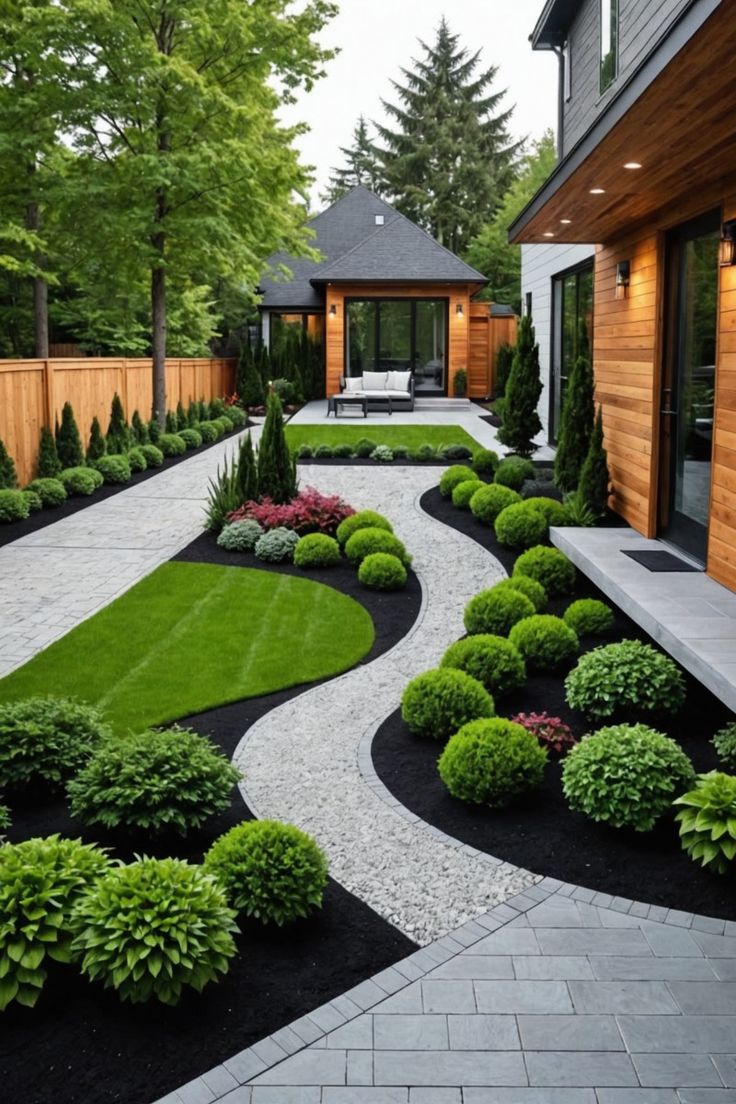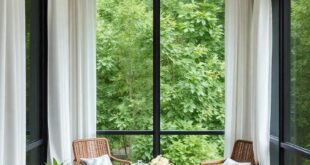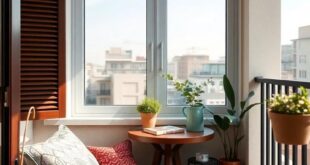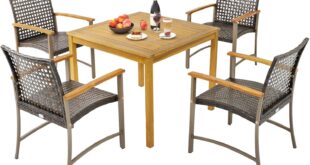When it comes to making a lasting first impression, your home’s curb appeal plays a pivotal role. The front yard serves as the welcoming gateway to your property, reflecting not only your personal style but also the care and attention you’ve invested in your living space. A well-designed landscape can elevate the aesthetic of your home, boost its value, and create a harmonious atmosphere that complements its architecture. Whether you’re a seasoned gardener looking to refresh your outdoor oasis or a newcomer to landscaping eager to embark on this creative journey, our guide, “Transform Your Curb Appeal: A Guide to Front Yard Landscaping,” will equip you with the inspiration and practical strategies needed to enhance your front yard. Get ready to explore a variety of techniques, from meticulous planting and strategic lighting to the art of hardscaping, all aimed at transforming your approach to outdoor beauty. Let’s dive in and uncover the potential that lies just beyond your doorstep.
Understanding the Importance of Front Yard Landscaping
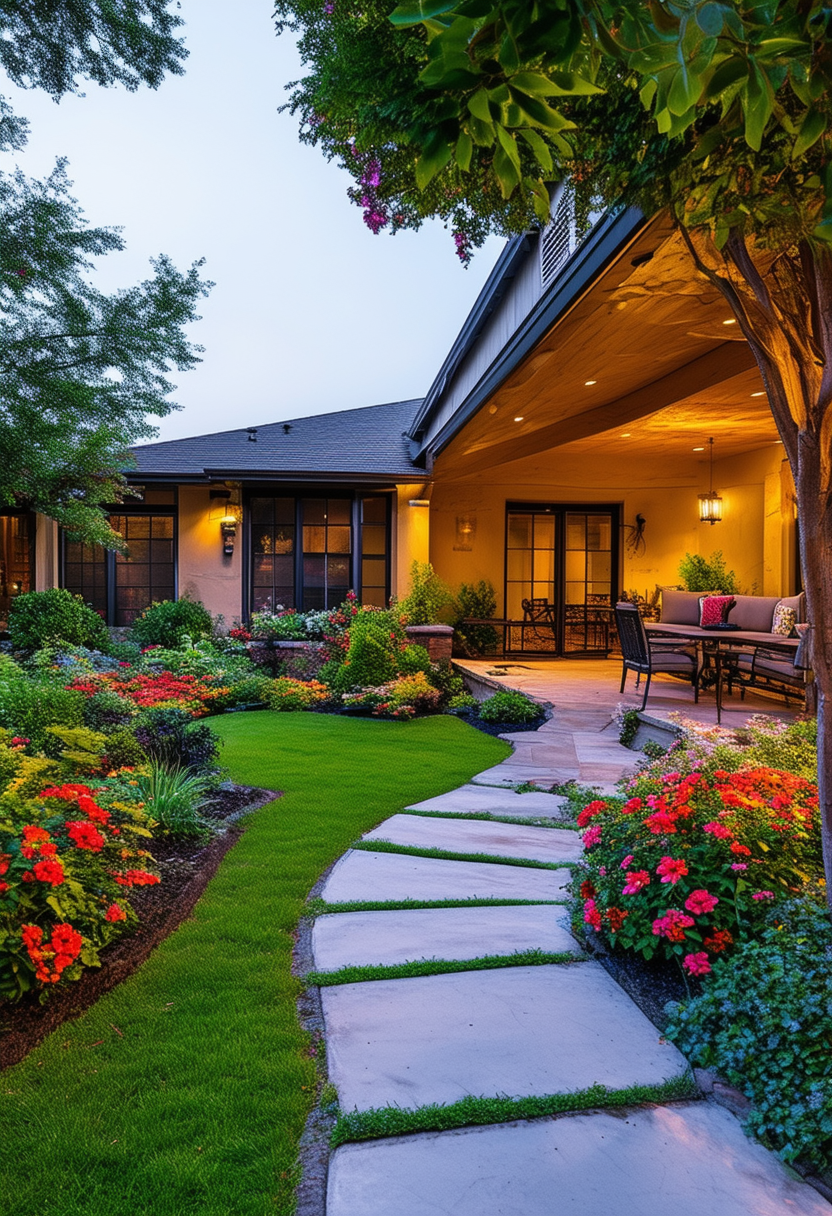
Front yard landscaping plays a crucial role in shaping the overall aesthetic of a home. It serves as the first impression, welcoming guests and providing a glimpse of the style and care found within. A well-designed front yard not only enhances the beauty of the property but also significantly boosts its value. Elements such as vibrant flower beds, manicured lawns, and inviting pathways can transform a mundane entrance into a striking focal point. Moreover, a thoughtfully landscaped yard can promote environmental benefits, improving air quality and supporting local wildlife.
Beyond enhancing beauty and property value, front yard landscaping offers various practical advantages. A thoughtfully arranged garden can improve functionality, creating defined spaces for relaxation or social gatherings. Consider these essential aspects when planning your landscaping:
- Color Coordination: Choose plant colors that complement or contrast harmoniously with your home’s exterior.
- Texture Variety: Mix plants with different textures to create visual interest.
- Seasonal Appeal: Incorporate a variety of plants that bloom in different seasons for year-round beauty.
- Sustainability: Opt for native plants that require less maintenance and water.
| Element | Benefit |
|---|---|
| Flower Beds | Add color and attract pollinators. |
| Hardscaping | Creates pathways and outdoor seating. |
| Trees | Provide shade and enhance privacy. |
| Lawn | Offers a soft, inviting area for play and relaxation. |
Key Elements of Front Yard Design
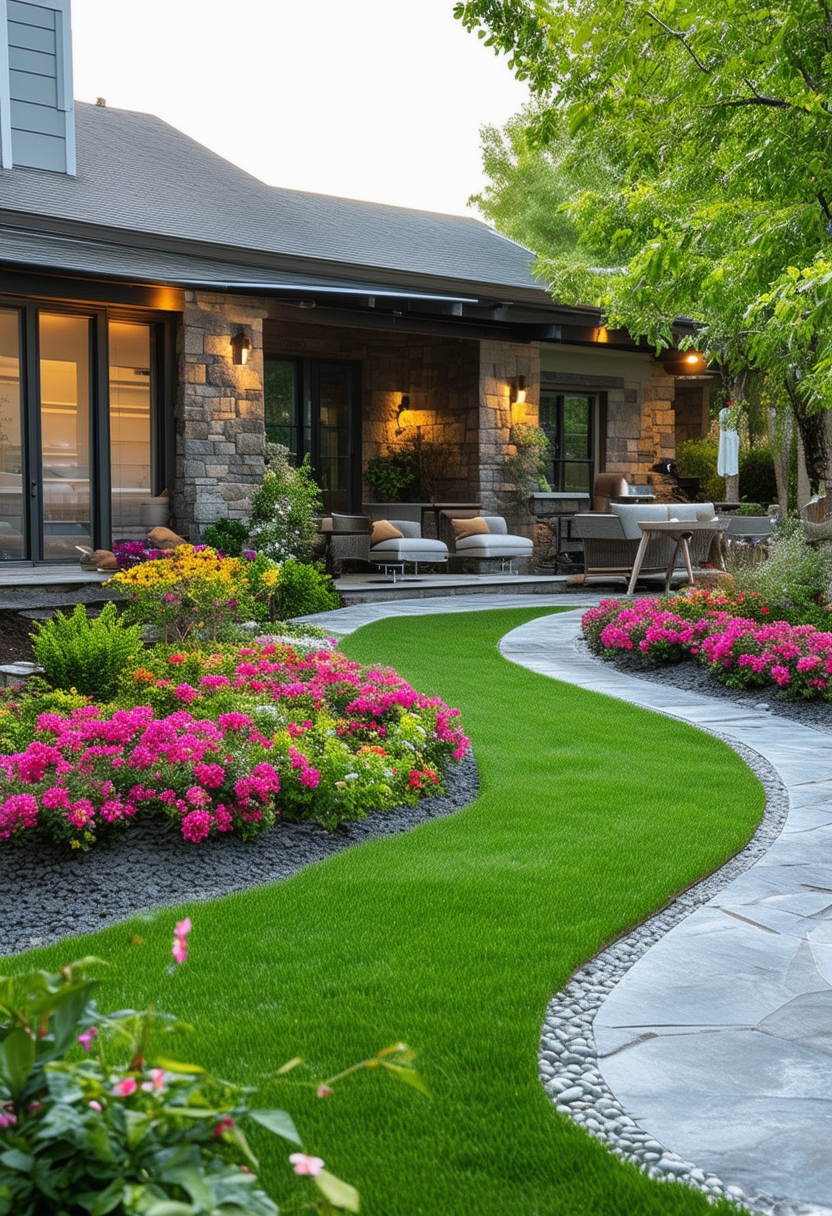
Designing your front yard requires a harmonious blend of aesthetics and functionality. To create an inviting atmosphere, consider incorporating layered plantings that provide visual interest year-round. Start with taller plants or trees at the back, transitioning to mid-height shrubs, and colorful flowers at the front. Enhance the landscape with strategically placed pathways that lead guests to your door, using durable materials like stone or gravel. This not only adds structure but also facilitates easy movement through the space. Additionally, focal points such as decorative benches, sculptures, or water features can serve as eye-catching elements that draw the viewer’s attention and elevate the overall appeal of your property.
Don’t overlook the importance of lighting in your front yard design to highlight its best features during the evening hours. Incorporate pathway lights, spotlights, or string lights to create a welcoming ambiance after dark. Furthermore, consider implementing sustainable practices by utilizing native plants that thrive in your local environment, requiring less water and maintenance. To tie everything together, think about the color scheme—selecting a palette that complements your home’s exterior will unify the landscape. Organize your plant selections in a simple table to visualize combinations:
| Plant Type | Color | Height |
|---|---|---|
| Lavender | Purple | 24 inches |
| Boxwood | Green | 36 inches |
| Daylily | Yellow | 18 inches |
Choosing the Right Plants for Your Front Yard
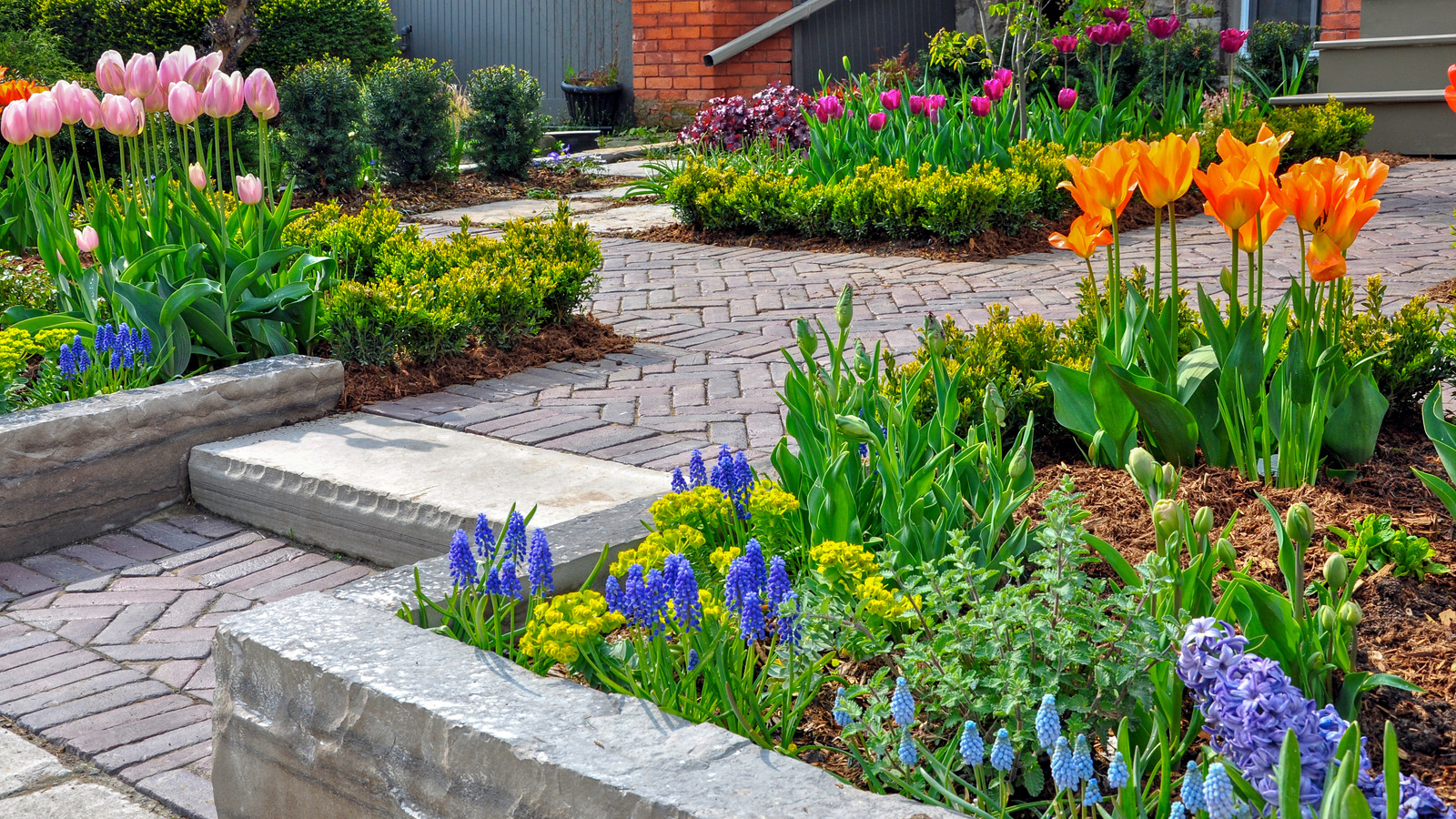
When selecting plants for your front yard, it’s essential to consider a mix of aesthetics and practicality. Think about the climate, soil type, and the amount of sunlight that your yard receives throughout the day. Using a combination of native and adaptive species can be beneficial, as these plants tend to thrive in local conditions and require less maintenance. Some excellent choices can include:
- Colorful Perennials: Such as daylilies or coneflowers that provide vibrant blooms each year.
- Low-Maintenance Shrubs: Like boxwoods or viburnums that offer year-round greenery with minimal care.
- Ground Covers: Such as creeping thyme or sedum that add texture and can help suppress weeds.
Additionally, it’s important to think about the varying heights and textures of the plants you choose to create visual interest. Layering taller plants in the back with shorter ones in the front can create depth, while incorporating plants with different leaf shapes and colors can enhance the overall look. A great way to visualize your selection is through a simple comparison table:
| Plant Type | Height | Sun Requirements | Flowering Season |
|---|---|---|---|
| Daylily | 24-36 inches | Full Sun | Summer |
| Boxwood | 2-10 feet | Partial to Full Shade | None |
| Creeping Thyme | 2-6 inches | Full Sun | Summer |
Creating a Welcoming Pathway in Your Front Yard
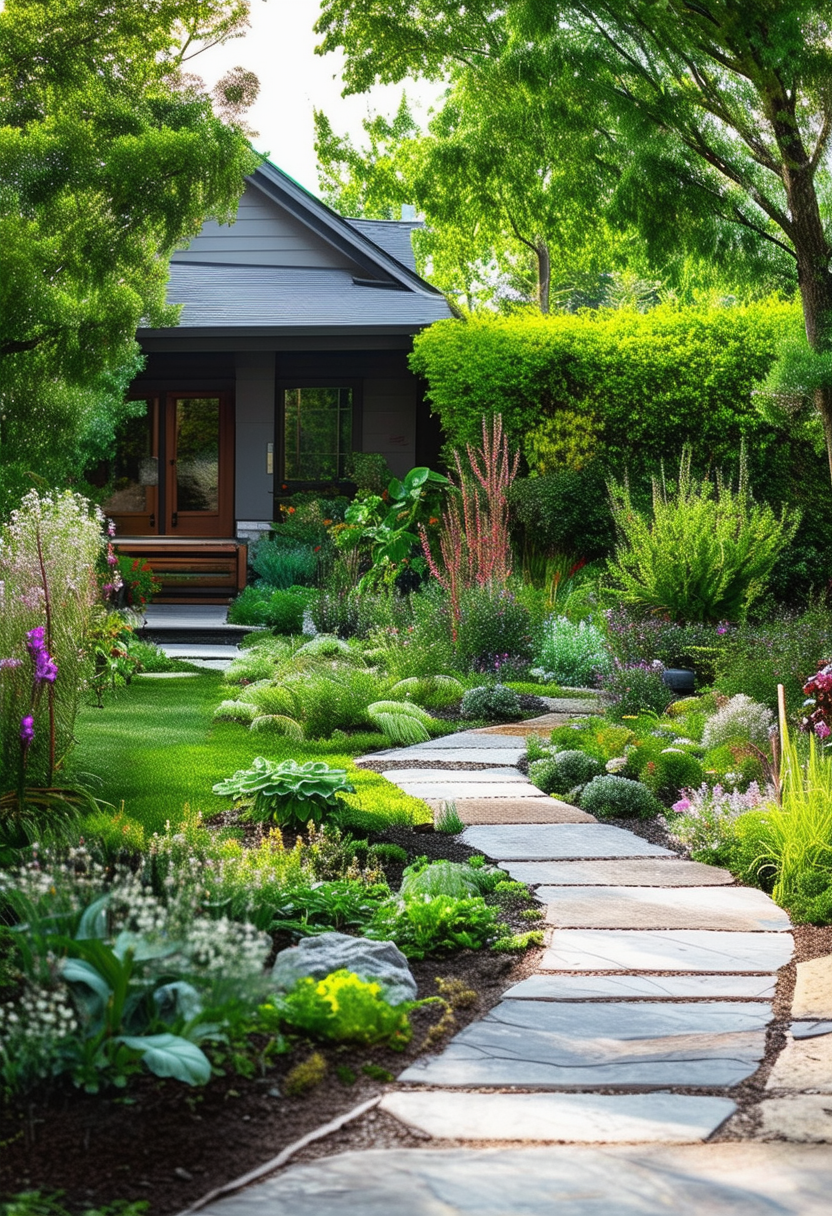
Establishing a warm and inviting pathway in your front yard can enhance both functionality and visual appeal. Begin by selecting materials that resonate with the overall aesthetic of your home. Options like natural stone, brick, or decorative gravel create diverse textures and can be arranged in unique patterns. Consider incorporating gentle curves rather than straight lines to create a more organic feel. Don’t forget to incorporate lighting: small solar lamps or lanterns can illuminate the pathway while offering a delightful evening ambiance. Building borders using edging stones or flower beds effectively delineates the path and adds to the charm.Integrating lush plantings alongside your walkway can further enhance its allure. Choose a vibrant mix of perennials, annuals, and shrubs to bring colors and scents into your garden. Grouping plants in odd numbers or creating small clusters can make the design feel both intentional and more casual. Consider including seasonal blooms to ensure something is always in flower. Additionally, adding a few accent pieces such as a decorative bench or a small water feature can offer a resting point and a focal element, inviting visitors to linger a moment longer in your delightful space.
Incorporating Hardscaping Features in Your Front Yard

Hardscaping can significantly enhance your front yard by adding structure and character. Incorporating features such as walkways, patios, and retaining walls creates visual interest and provides practical benefits. Consider using materials like natural stone, stamped concrete, or brick to complement your home’s architecture. A well-placed pathway can guide visitors to your front door and showcase your landscaping efforts. Adding decorative elements such as boulders or fountains can further elevate the aesthetic appeal while providing a focal point that draws the eye.
When planning your hardscaping, think about the overall flow of your space. Here are some essential elements to consider:
- Walkways: Connect different areas of your front yard and create inviting paths.
- Patios: Offer a perfect spot for outdoor gatherings and relaxation.
- Retaining Walls: Add dimension to sloped yards while preventing erosion.
- Edging: Define garden beds and pathways for a polished look.
To help visualize the benefits of different hardscaping features, here’s a simple comparison of materials based on durability and aesthetic appeal:
| Material | Durability | Aesthetic Appeal |
|---|---|---|
| Natural Stone | High | Timeless |
| Stamped Concrete | Moderate | Versatile |
| Brick | High | Classic |
Enhancing Your Front Yard with Seasonal Color

Infusing your front yard with seasonal color can breathe new life into your landscape, creating a dynamic visual experience throughout the year. Consider planting a variety of flowers and plants that bloom at different times, allowing for a continuous display of color from spring through winter. Some popular choices include:
- Spring: Tulips, Daffodils, and Hyacinths
- Summer: Petunias, Marigolds, and Zinnias
- Fall: Asters, Mums, and Ornamental Kale
- Winter: Pansies, Hellebores, and Winterberry
Furthermore, layering your plants can add depth and texture to your yard. By incorporating taller plants in the back and shorter varieties in the front, you create a visually appealing arrangement. Consider adding some evergreen shrubs or ornamental grasses for year-round interest, while using seasonal containers filled with vibrant annuals to enhance your entryway. Here’s a simple selection of container ideas:
| Season | Container Plant Ideas |
|---|---|
| Spring | Snapdragons, Lobelia |
| Summer | Bougainvillea, Geraniums |
| Fall | Chrysanthemums, Ornamental Peppers |
| Winter | Evergreen Foliage, Cyclamen |
The Role of Lighting in Front Yard Appeal
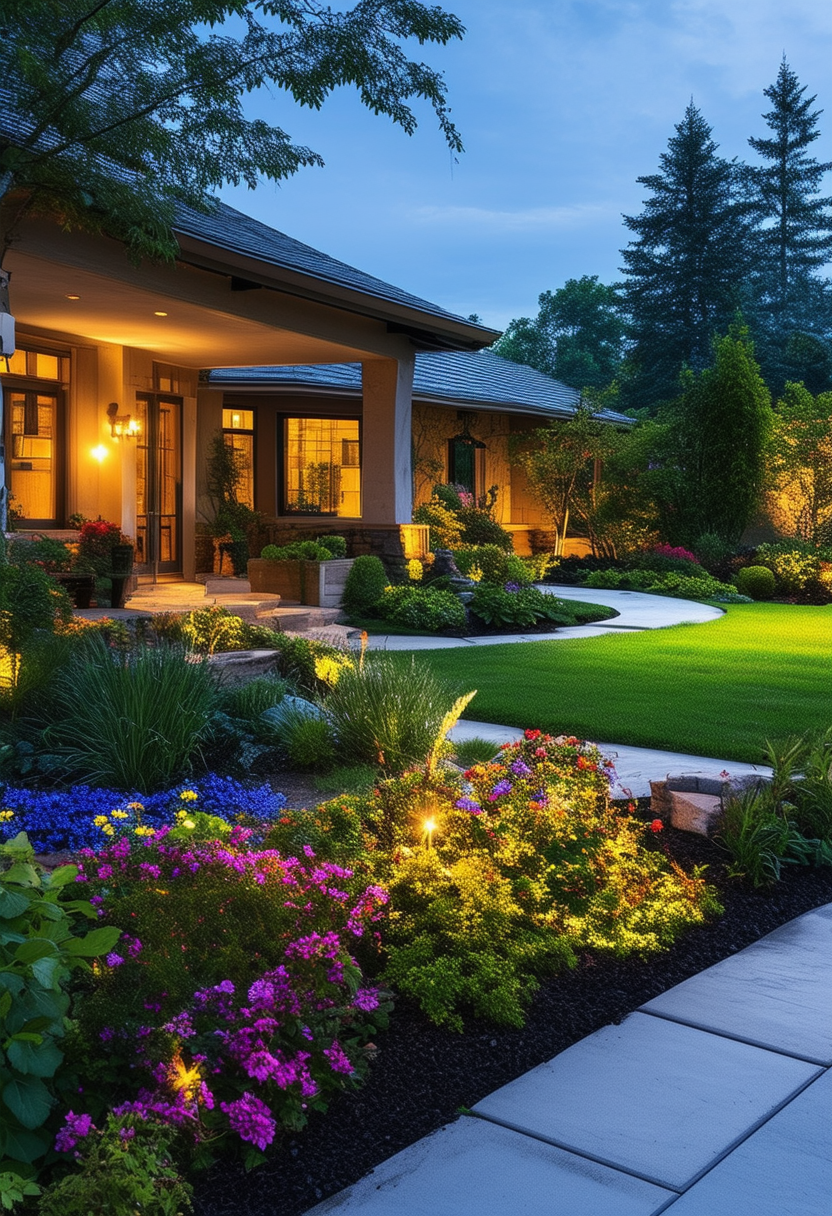
Lighting can significantly enhance the overall appeal of your front yard, transforming it into a welcoming oasis even after the sun sets. By strategically placing light sources, you can highlight the best features of your landscaping while creating a warm, inviting ambiance. Consider using path lights along walkways, spotlights to illuminate trees or architectural elements, and ambient lighting for a soft glow that enhances sitting areas. This not only directs attention to focal points but also improves safety and accessibility.

Moreover, different types of lighting can create distinct atmospheres that reflect your personal style. For instance, warm white lights evoke a cozy, home-like feeling, while cool blue lights can bring a contemporary touch. To help you choose, here’s a simple comparison table of common outdoor lighting options:
| Type of Lighting | Best Uses | Effect |
|---|---|---|
| Path Lights | Walkways, driveways | Safety, direction |
| Spotlights | Trees, sculptures | Highlighting features |
| String Lights | Patios, decks | Festive ambiance |
| Wall Sconces | Entrances, porches | Welcoming glow |
By thoughtfully integrating lighting into your landscape design, you can accentuate both the aesthetics and functionality of your front yard, making it a delightful space to enjoy both day and night.
Adding a Focal Point to Your Front Yard
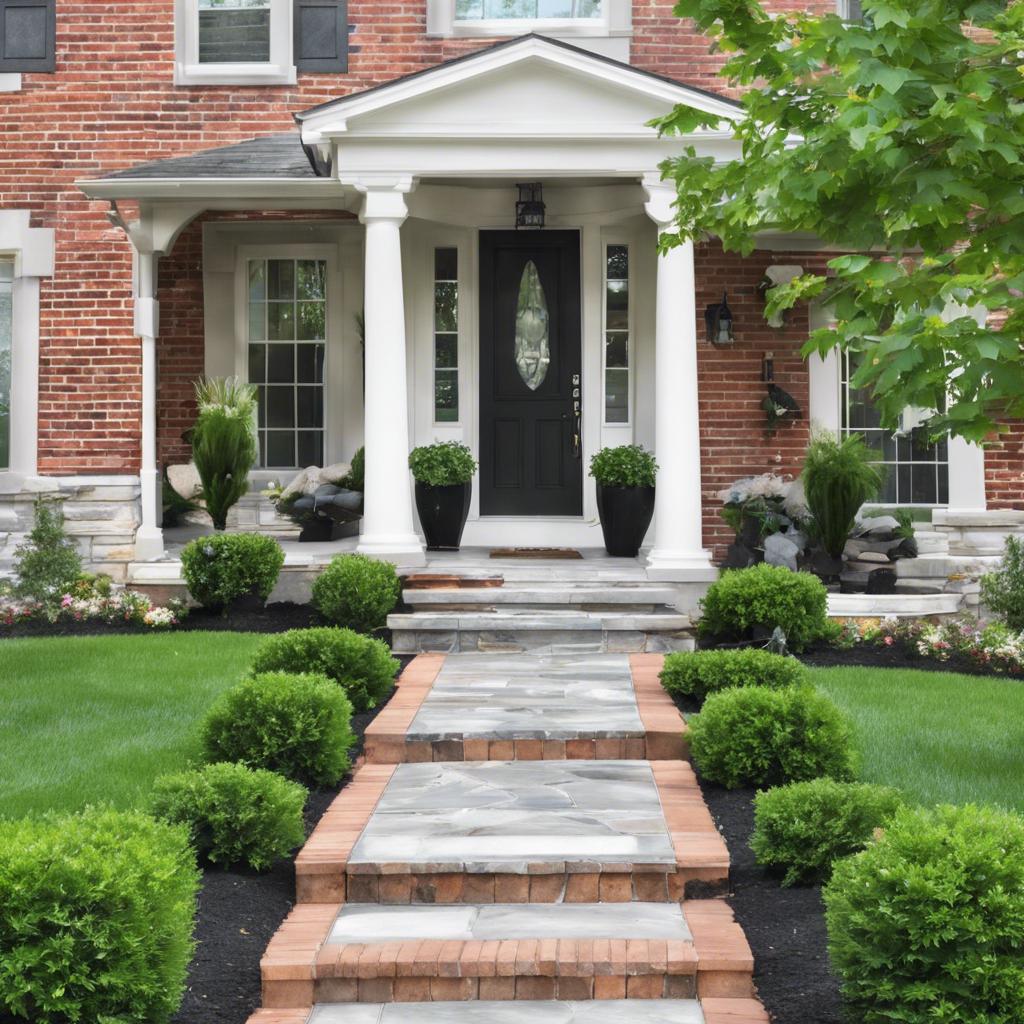
Incorporating a strong focal point into your front yard can dramatically enhance the visual appeal and create a welcoming atmosphere. Consider these bold features that can draw the eye and add character:
- Statues or Sculptures: A unique piece of art can serve as a conversation starter and highlight your personal style.
- Water Features: A small fountain or pond can introduce tranquility and a refreshing element to your landscape.
- Colorful Planters: Bright, oversized pots filled with seasonal flowers can add vibrancy and charm.
- Architectural Elements: Decorative trellises, garden arches, or pergolas can create layers and depth, establishing a sense of structure.
When you select a focal point, ensure it harmonizes with the surrounding landscape for a cohesive look. Here’s a quick reference table to help you choose the right focal point:
| Feature Type | Style Inspiration |
|---|---|
| Statue | Classical or Modern |
| Water Feature | Zen garden or Rustic |
| Planters | Minimalist or Bohemian |
| Architectural Element | Traditional or Contemporary |
Integrate your chosen focal point with complementary plantings and pathways to lead the eye naturally, ensuring that the overall design of your front yard creates a harmonious flow. Each element should work together to enhance the richness of your external space, leaving a lasting impression on visitors and passersby alike.
Designing a Sustainable Front Yard Landscape
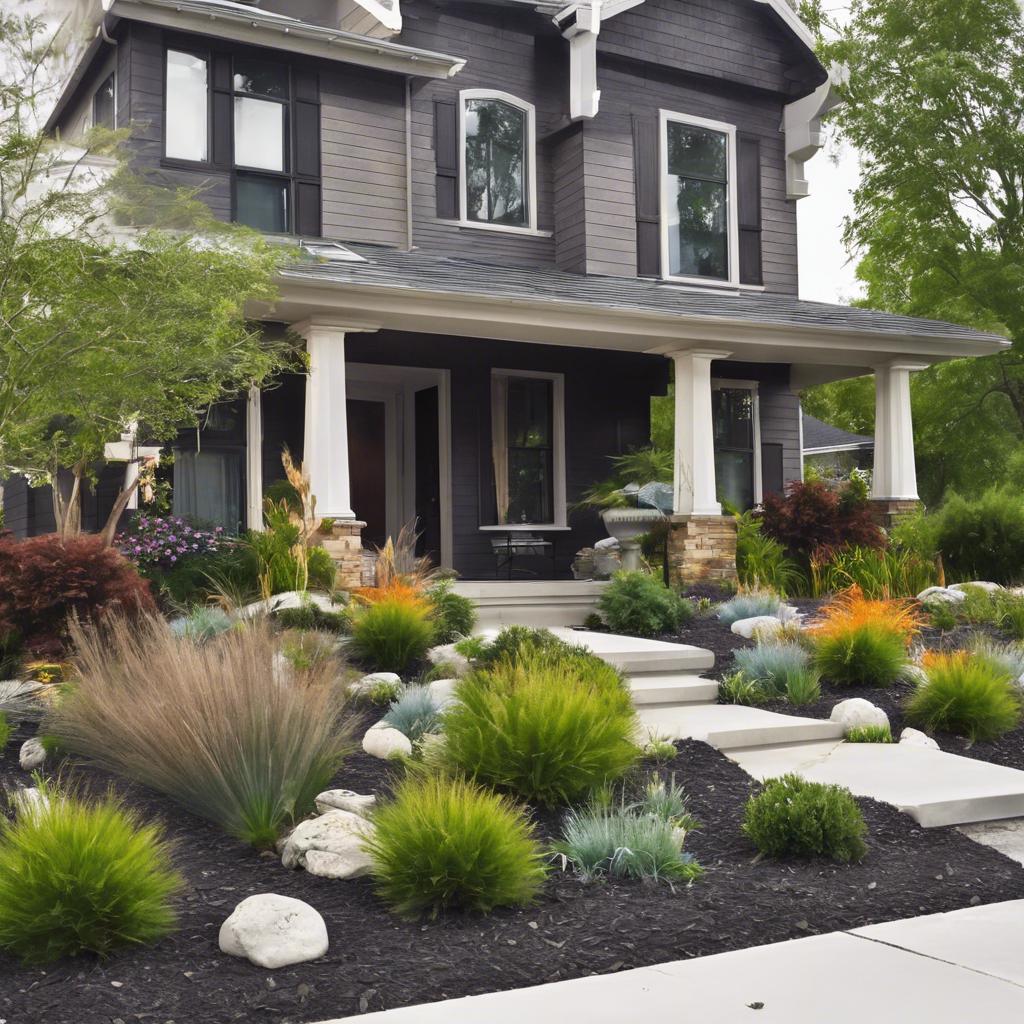
Creating a front yard that emphasizes sustainability does not only benefit the environment but also enhances your home’s curb appeal. Begin by selecting native plants that thrive in your region, as they require less water and maintenance. Incorporate drought-resistant varieties like succulents, ornamental grasses, and flowering plants that adapt well to local conditions. Additionally, using perennial plants minimizes the need for replanting and can create vibrant color throughout the seasons. Consider utilizing edible landscaping, such as berry bushes or herb gardens, which not only adds beauty but also offers a fresh supply of produce right at your doorstep.
Implementing eco-friendly practices can further enhance your landscape’s sustainability. Opt for permeable paving materials to allow rainwater to seep into the ground, reducing runoff and promoting natural filtration. Install a rain garden that captures and utilizes stormwater, providing a habitat for beneficial wildlife. Additionally, consider a composite deck or recycled materials for garden paths and furniture. Incorporating solar lighting for pathways can illuminate your landscape while conserving energy. By harmonizing these elements, you can create a front yard that is both aesthetically pleasing and environmentally responsible.
Water Features for a Tranquil Front Yard
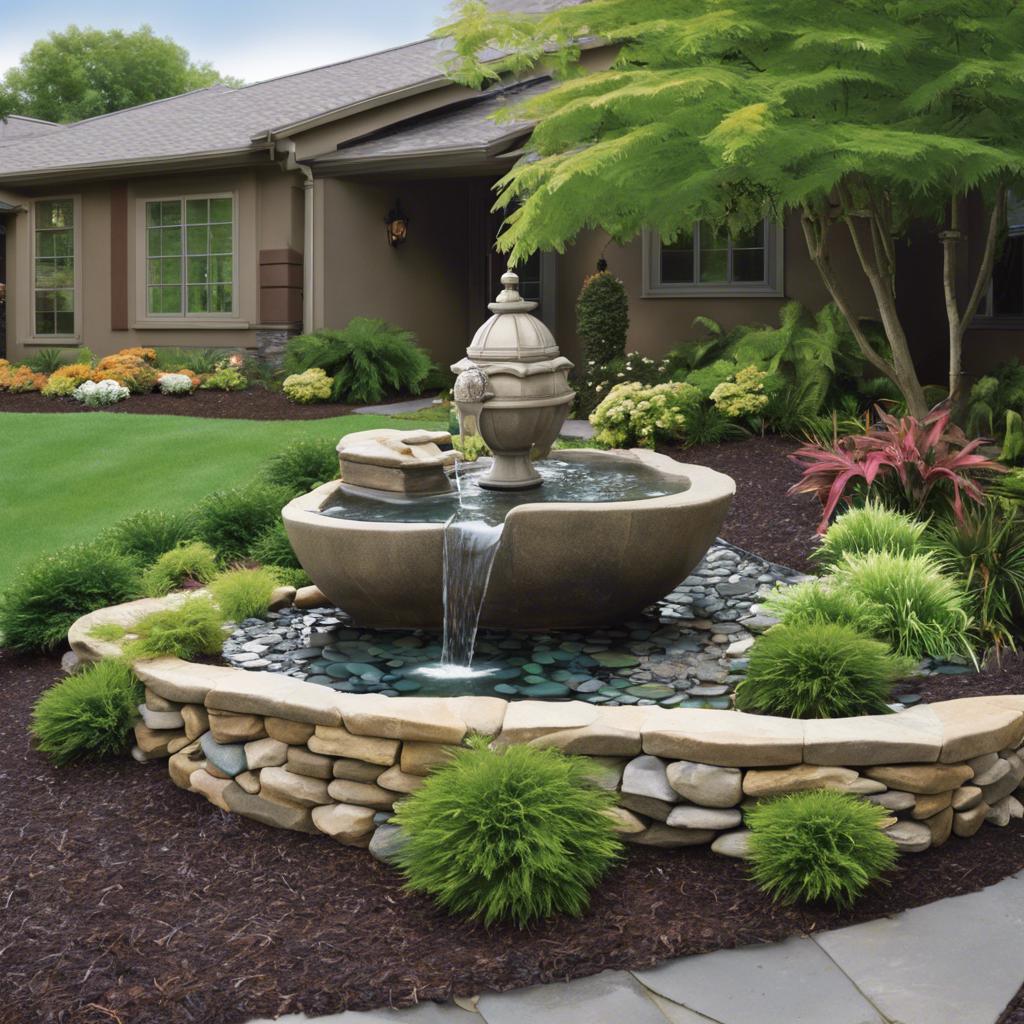
Imagine stepping into your front yard and being greeted by the soothing sound of water gently cascading over stones. Incorporating water features into your landscaping not only elevates the aesthetic appeal but also creates a serene atmosphere, perfect for unwinding after a long day. Some popular options to consider include:
- Birdbaths – These classic additions attract feathered friends and create a lively environment.
- Fountains – From petite tabletop styles to grand freestanding fountains, they can become stunning focal points.
- Ponds – Adding a small pond can introduce reflective surfaces and provide an inviting habitat for aquatic plants and wildlife.
When planning your water feature, think about how it integrates with your overall design and how it aligns with maintenance preferences. It’s vital to select materials that complement your home’s architecture. For a cohesive look, consider using streamlined features that mirror the lines of your house, or use natural stones that blend harmoniously with your garden. Here’s a simple comparison of popular water features:
| Type | Aesthetic Appeal | Maintenance Level |
|---|---|---|
| Birdbath | Classic Charm | Low |
| Fountain | Elegant Statement | Moderate |
| Pond | Natural Retreat | High |
Using Edging to Define Your Front Yard Beds

Edging serves as a boundary that not only segregates beds from lawns but also enhances the overall aesthetic of your front yard. By defining these spaces with materials such as natural stone, bricks, or wood, you create visual interest and a clear structure. Each option offers a unique texture and color that can complement your home’s style. Here are some popular edging ideas to consider:
- Stone Borders: Durable and timeless, ideal for a classic look.
- Brick Edging: Adds a rustic charm and can be laid in various patterns.
- Wooden Timbers: Great for a natural feel, perfect for cottage-style landscaping.
- Metal Edging: Sleek and contemporary, suitable for modern designs.
To determine the best edging option for your landscape, consider factors like durability, maintenance, and visual appeal. A well-defined edge not only keeps grass and weeds at bay but also accentuates the plants in your beds, making them the focal point of your landscaping. For a polished look, you might want to incorporate some of these tips:
| Edging Type | Benefits | Considerations |
|---|---|---|
| Stone | Long-lasting, attractive | Higher cost, heavy |
| Brick | Classic appeal, customizable | Can shift over time |
| Wood | Natural look, affordable | May rot over time |
| Metal | Sleek design, low maintenance | Can be prone to rust |
Inspiring Front Yard Themes and Styles

Elevating your front yard can be as simple as choosing a theme that resonates with your personal style and complements your home’s architecture. Consider a Mediterranean oasis, complete with terracotta pots filled with vibrant bougainvillea and olive trees. Use warm hues such as sunny yellows and earthy oranges to create an inviting pathway lined with natural stone. For a touch of elegance, incorporate a charming wrought-iron bench where you can retreat and sip your morning coffee amidst fragrant blooms.
If you’re drawn to a more contemporary aesthetic, a minimalist approach may be ideal. Focus on clean lines and subtle textures, using a restrictive palette of greens and whites. You could feature geometric planters, an expanse of native grasses, and a few strategically placed boulders. Consider adding a small water feature, like a sleek fountain, as the centerpiece that not only enhances tranquility but also serves as a modern touch to your curb appeal.
Incorporating Native Plants in Your Front Yard
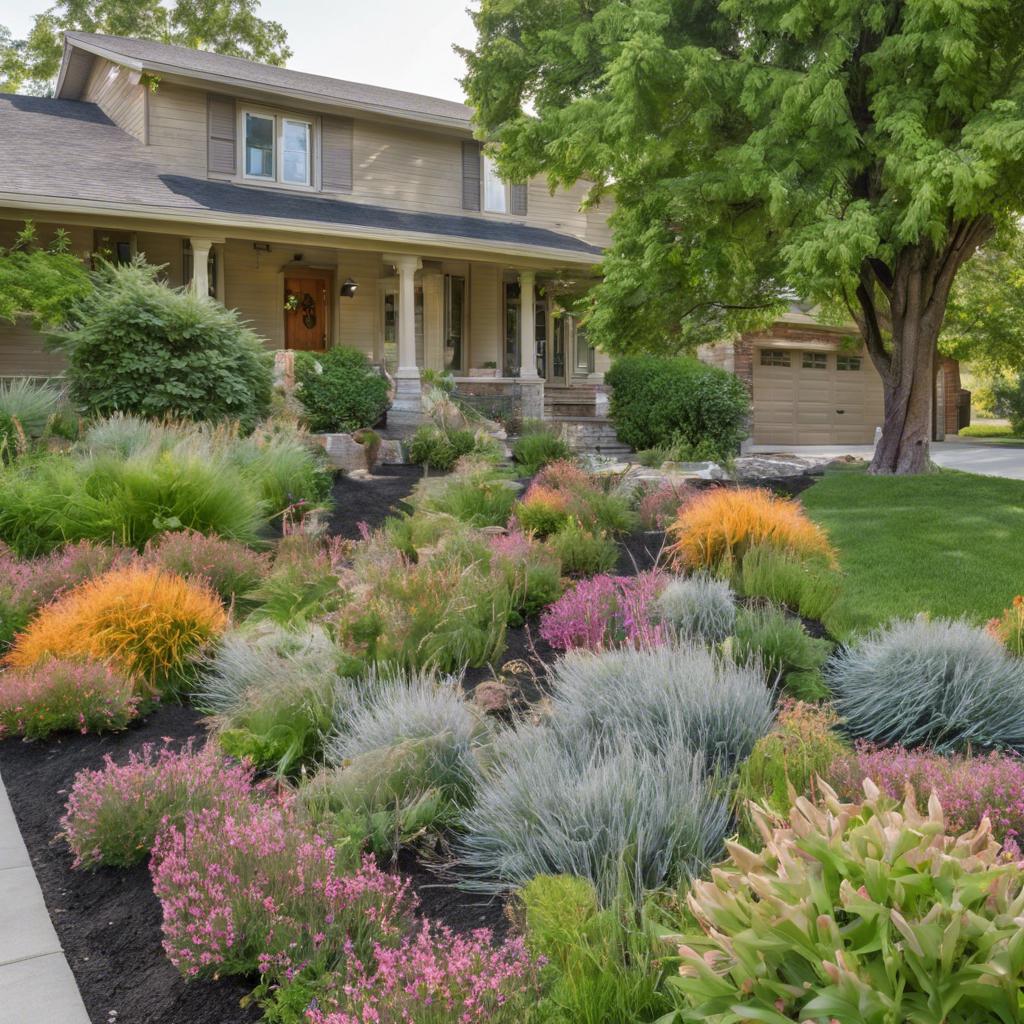
Embracing native plants in your front yard can significantly enhance its aesthetic appeal while promoting sustainability and biodiversity. Native plants are adapted to your local climate and soil conditions, making them easier to maintain and less resource-intensive. Consider incorporating a variety of flowering perennials, shrubs, and grasses that not only provide visual interest throughout the seasons but also attract local wildlife, such as birds, butterflies, and bees. A carefully selected palette can create a cohesive look, blending color and texture that changes beautifully with the seasons.
When planning your landscape, think about grouping plants with similar water and sunlight needs to optimize their growth and reduce maintenance time. For instance, you might mix low-growing ground covers with taller flowering plants to create layers and depth. To help you get started, here’s a simple table outlining a few popular native plants and their attributes:
| Plant Name | Bloom Season | Height | Wildlife Benefits |
|---|---|---|---|
| Purple Coneflower | Summer | 2-4 ft | Attracts butterflies |
| Black-eyed Susan | Summer-Fall | 1-3 ft | Supports pollinators |
| Switchgrass | Fall | 3-6 ft | Provides bird habitat |
| Wild Bergamot | Summer | 2-4 ft | Attracts bees and hummingbirds |
Front Yard Landscaping for Small Spaces

For small front yards, every inch counts, so maximizing your space while enhancing aesthetic appeal is essential. Consider incorporating layered landscaping that uses different heights to create depth. Opt for a mix of tall grasses or flowering plants at the back, then gradually transition to shorter plants in the front. Adding container gardens can also be an effective choice, allowing for mobility and seasonal updates. Choose decorative pots that complement your home’s style, and fill them with colorful blooms or lush greenery to bring life and vibrancy without overwhelming the area.
In addition to plants, hardscaping elements like pathways and seating areas can define your small space and make it feel larger. Use materials like stone or brick to construct a charming, winding path that draws the eye and encourages exploration. Incorporate vertical gardens or wall-mounted planters to save ground space while still showcasing beautiful foliage. Consider adding a small bench or bistro set to create a cozy nook, perfect for relaxing or entertaining. By layering plants and hardscapes, you can craft a stunning front yard that captures attention and enhances your home’s curb appeal innovatively and thoughtfully.
Tips for Maintaining Your Front Yard Landscape

To keep your front yard looking its best, consistency is key. Establish a regular maintenance schedule that includes mowing, weeding, and pruning to ensure your plants and grass stay healthy. Consider the changing seasons; for example, you might need to adjust your watering and fertilizing routines in the dry summer months versus the rainy spring. Through routine upkeep, your landscape will not only look immaculate but will also thrive throughout the year.
Enrich your landscape by incorporating a variety of plants with different blooming cycles and colors. This diversification enhances visual interest and attracts local wildlife. To complement your plant choices, think about adding hardscapes like pathways and decorative stones. Here are some simple yet effective ideas to get started:
- Mulching: Helps retain moisture and suppress weeds.
- Seasonal Flowers: Change your flower beds with the seasons for vibrant color.
- Decorative Edging: Defines flower beds and adds structure to your landscape.
DIY Projects to Elevate Your Front Yard
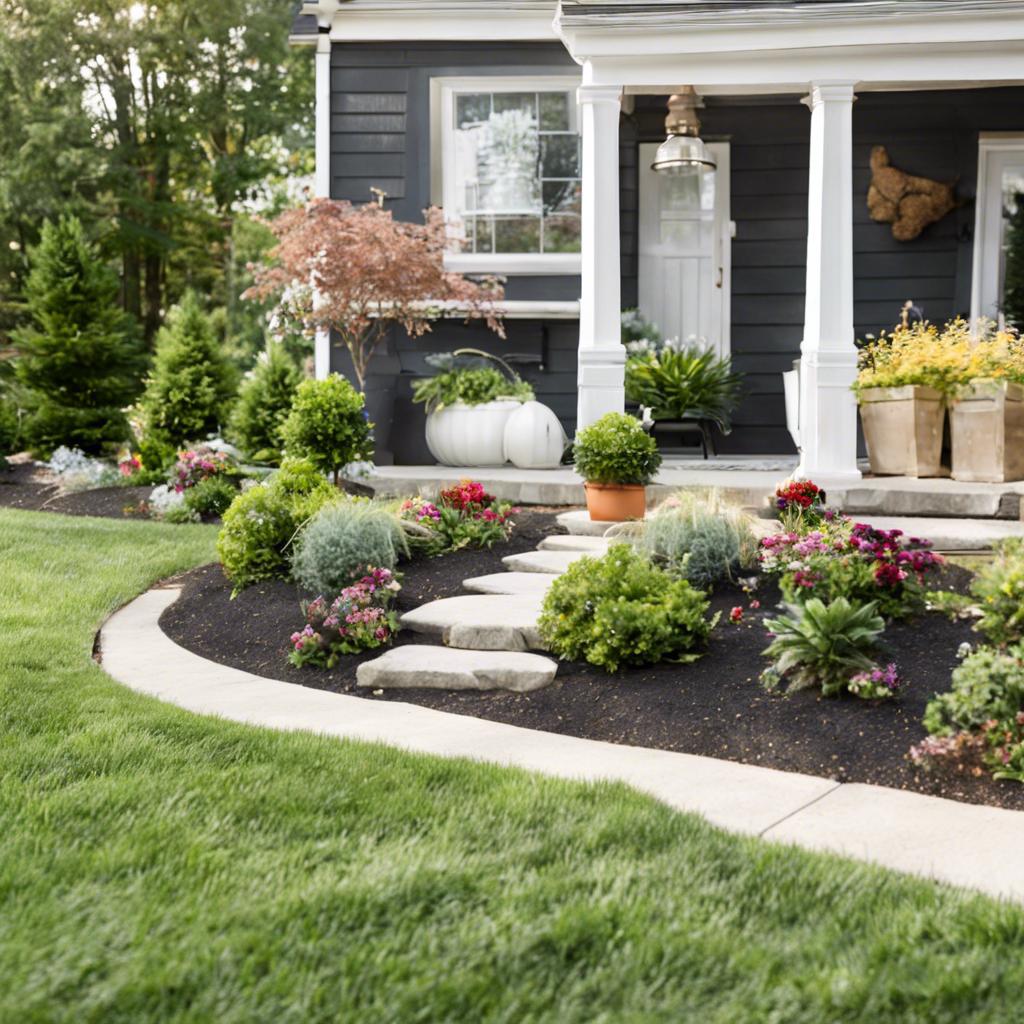
Transform your front yard into a welcoming oasis with a few creative DIY projects that not only elevate your curb appeal but also reflect your personal style. Start with pathway lights to guide guests to your doorstep; they can easily be crafted using mason jars and solar lights. Another striking addition is a flower bed border made from reclaimed wood or decorative stones, lending an organic charm to your landscape. Don’t forget to incorporate a few seasonal decorations to keep your front yard lively throughout the year, whether it’s pumpkins in the fall or vibrant flowers in the spring.
For the green thumbs, creating a vertical garden can be a stunning focal point and a space-saver. Use old pallets or hanging planters to showcase your favorite herbs and flowers. For those looking to add functionality, consider building a custom bench or seating area to provide a comfortable spot to enjoy your surroundings. Additionally, small details like painted rocks with positive messages or colorful birdhouses can add a whimsical touch. Here’s a simple table outlining essential tools for these projects:
| Tool | Purpose |
|---|---|
| Shovel | Digging holes for plants or pathways |
| Level | Ensuring straight lines and balanced installations |
| Paintbrush | For detailing woodwork and decorative touches |
| Drill | Assembling furniture or other structures |
The Impact of Outdoor Furniture on Front Yard Appearance

Integrating outdoor furniture into your front yard design can significantly elevate its overall appearance and charm. By strategically placing stylish seating areas, decorative tables, and unique accents, you can create inviting spaces that beckon neighbors and passersby. To maximize visual appeal, consider selecting furniture that complements your home’s architecture and the surrounding landscape. Textured fabrics, natural wood finishes, or metal elements can introduce contrast and interest, offering a dynamic view. Moreover, choose pieces that encourage relaxation and enjoyment, turning your front yard into a charming extension of your home.
When selecting outdoor furniture, pay attention to color, scale, and materials to harmonize with your garden’s natural features. Here are some key elements to consider:
- Color Palette: Select hues that either match or contrast with your home exterior.
- Scale: Ensure furniture size aligns with the area available, making it feel spacious and not cramped.
- Durability: Choose weather-resistant materials to maintain appearance throughout the seasons.
- Functionality: Furniture should serve a purpose, whether for entertaining guests or enjoying a quiet moment outdoors.
By thoughtfully incorporating outdoor furniture, you can create an aesthetically pleasing focal point that enhances your front yard, drawing attention and admiration from all who pass by. Here’s a brief comparison chart to visualize how different types of outdoor furniture contribute to curb appeal:
| Furniture Type | Impact on Curb Appeal | Recommended Style |
|---|---|---|
| Benches | Creates a welcoming atmosphere | Rustic or Modern |
| Tables | Adds functionality | Natural Wood or Metal |
| Chairs | Encourages outdoor enjoyment | Colorful or Neutral |
| Decorative Accents | Enhances visual interest | Artistic or Minimalist |
Creating a Kid-Friendly Front Yard
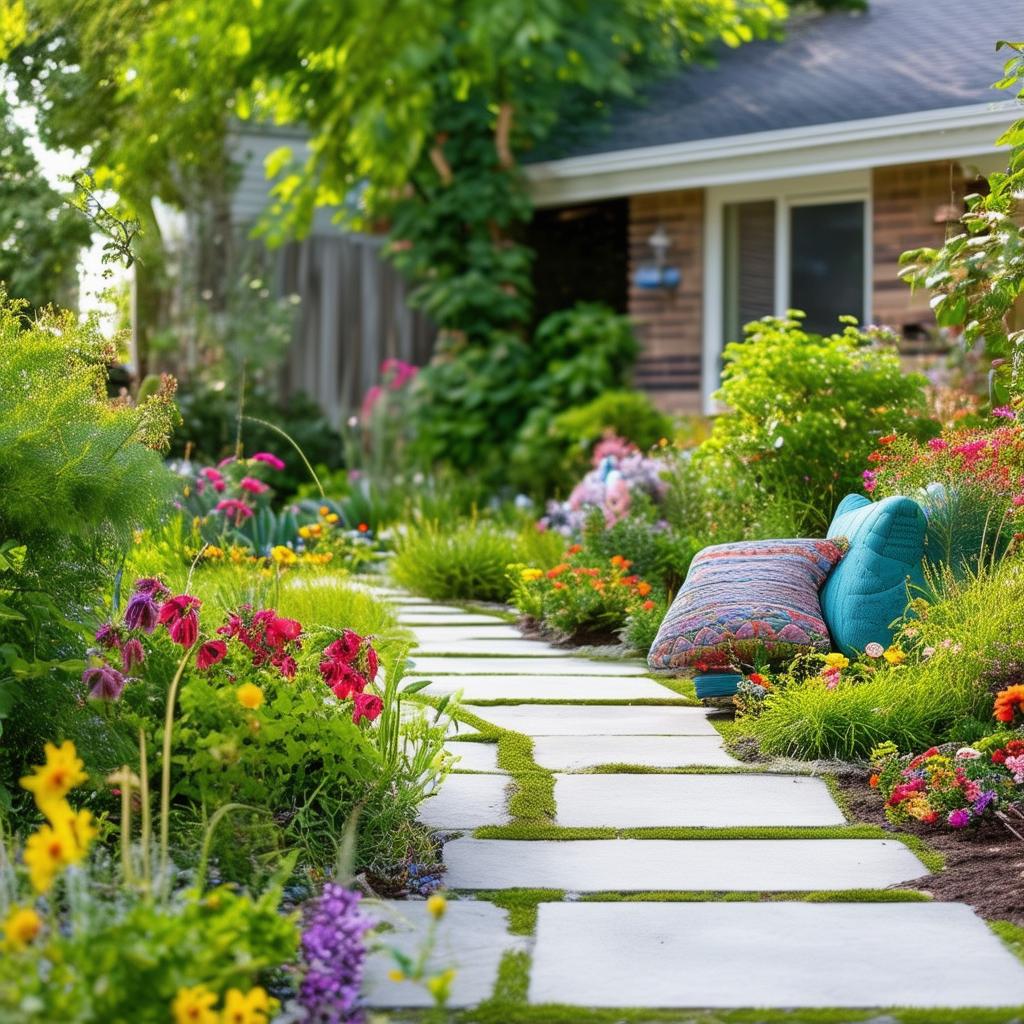
When designing a front yard that’s safe and engaging for children, it’s essential to combine functionality with creativity. Start by incorporating soft, grassy areas where kids can play, ensuring that you choose non-toxic, child-friendly plants to avoid any allergic reactions. Consider adding pathways of stepping stones, which not only guide children through the yard but also encourage exploration and imaginative play. Colorful flower beds can stimulate a child’s curiosity, while low-maintenance shrubs and ornamental grasses provide a beautiful backdrop without posing any safety risks. You might even think about including a small sandbox or a whimsical butterfly garden that children can tend to, fostering responsibility and a love for nature.
In addition to planting, you can enhance functionality with features that invite children to interact with their environment. Outdoor furniture, such as colorful picnic tables or benches, offers a comfortable space for crafts or snacks. A small pergola or trellis can provide shade, creating a cozy nook for reading or relaxing. To engage children further, consider building a mini-garden where they can grow easy-to-maintain plants like radishes or sunflowers. Here’s a quick comparison table summarizing these features:
| Feature | Benefits |
|---|---|
| Soft Grassy Areas | Safe play space for children |
| Pathways of Stepping Stones | Encourages exploration and adventure |
| Outdoor Furniture | Comfortable area for crafts or snacks |
| Mini-Garden | Promotes responsibility and love for nature |
Making Your Front Yard Pet-Friendly

Creating a welcoming and engaging front yard for your pets enhances both their experience and your home’s curb appeal. Consider incorporating soft pathways made of mulch or decomposed granite rather than gravel, which can be hard on sensitive paws. Additionally, include shady spots by planting native trees or using large planters that provide cooling spaces for your furry friends during hot days. This simple touch not only makes your yard more inviting but also helps to protect your pets from overheating.
To stimulate your pets’ natural instincts and ensure their safety while enhancing your landscape, think about introducing elements like pet-friendly plants or designated play areas. Consider planting catnip, lavender, or wheatgrass, which are safe for pets and can even add pleasing aromas to your yard. Furthermore, setting up a small fenced-in play zone with durable and chew-resistant materials, along with structures like agility equipment or tunnels, can create a fun and engaging environment. Here’s a brief overview of some suggested pet-friendly plants:
| Plant Name | Benefits |
|---|---|
| Catnip | Stimulates playful behavior |
| Lavender | Calming scent; deters pests |
| Wheatgrass | Nutritive snack; aids digestion |
Seasonal Upgrades for Your Front Yard

As the seasons change, so too should your front yard landscaping to keep it fresh and inviting. Start with spring, where you can introduce vibrant flowers like tulips and daffodils that burst into color after winter’s dullness. Consider adding a mix of perennials and annuals to create a dynamic display throughout the warmer months. Moving into summer, think about installing comfortable seating areas or a small fire pit surrounded by lush greenery, providing a perfect gathering spot. Incorporate drought-resistant plants to maintain a lush appearance while conserving water.
With autumn comes the opportunity to add warm hues to your yard. Use ornamental grasses and fall-blooming flowers like asters to create a rich tapestry of color. Don’t forget to consider winterization; evergreen shrubs and classic holiday décor can brighten even the dreariest days. Craft a cohesive look by using features like a stylish pathway or decorative lighting that enhances your yard’s charm all year round. Take a look at the following table for easy seasonal upgrade ideas:
| Season | Upgrade Ideas |
|---|---|
| Spring | Flower beds with tulips, daffodils, and colorful shrubs |
| Summer | Seating areas, fire pits, and drought-resistant plants |
| Autumn | Ornamental grasses, fall-blooming asters |
| Winter | Evergreen shrubs and festive outdoor lighting |
Evaluating Your Front Yards Curb Appeal Score
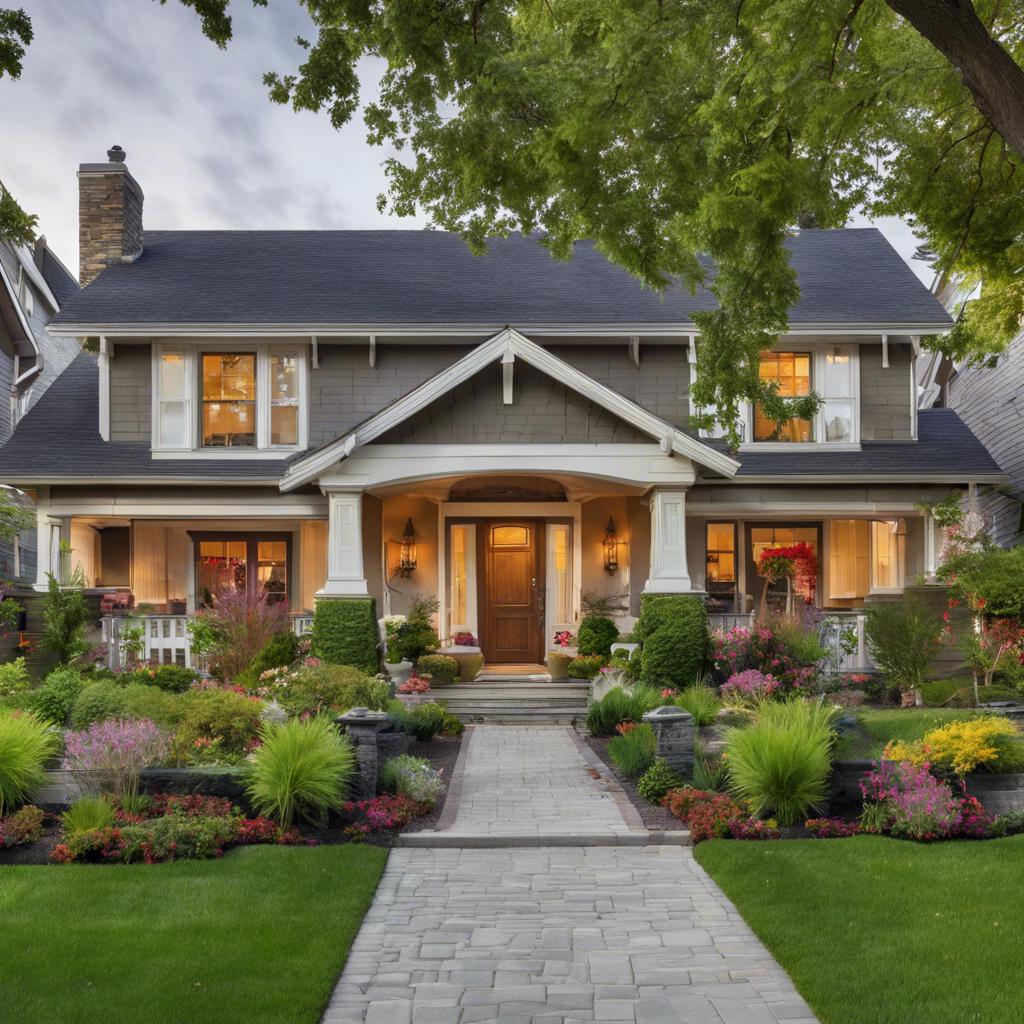
To effectively assess your front yard’s curb appeal score, start by examining the key elements that contribute to a welcoming aesthetic. Consider the condition and style of your landscaping, including plants and flower beds, as well as the overall maintenance of your lawn. Fresh, healthy greenery speaks volumes, while dull, overgrown plants can detract from your home’s charm. Make a checklist of the following factors:
- Lawn Health: Tidy, well-mowed grass.
- Plant Selection: Vibrant flowers and seasonal plants.
- Hardscape Features: Pathways, patios, and retaining walls.
- Lighting: Strategically placed outdoor lights.
- Furniture: Stylish and functional outdoor seating.
Next, evaluate the symmetry and balance of your front yard. A well-proportioned layout can create a seamless flow that is visually pleasing. Use the following table to score various aspects of your landscape for a comprehensive view:
| Element | Score (0-10) |
|---|---|
| Lawn Care | |
| Plant Variety | |
| Color Palette | |
| Hardscape Design | |
| Overall Impression |
Q&A
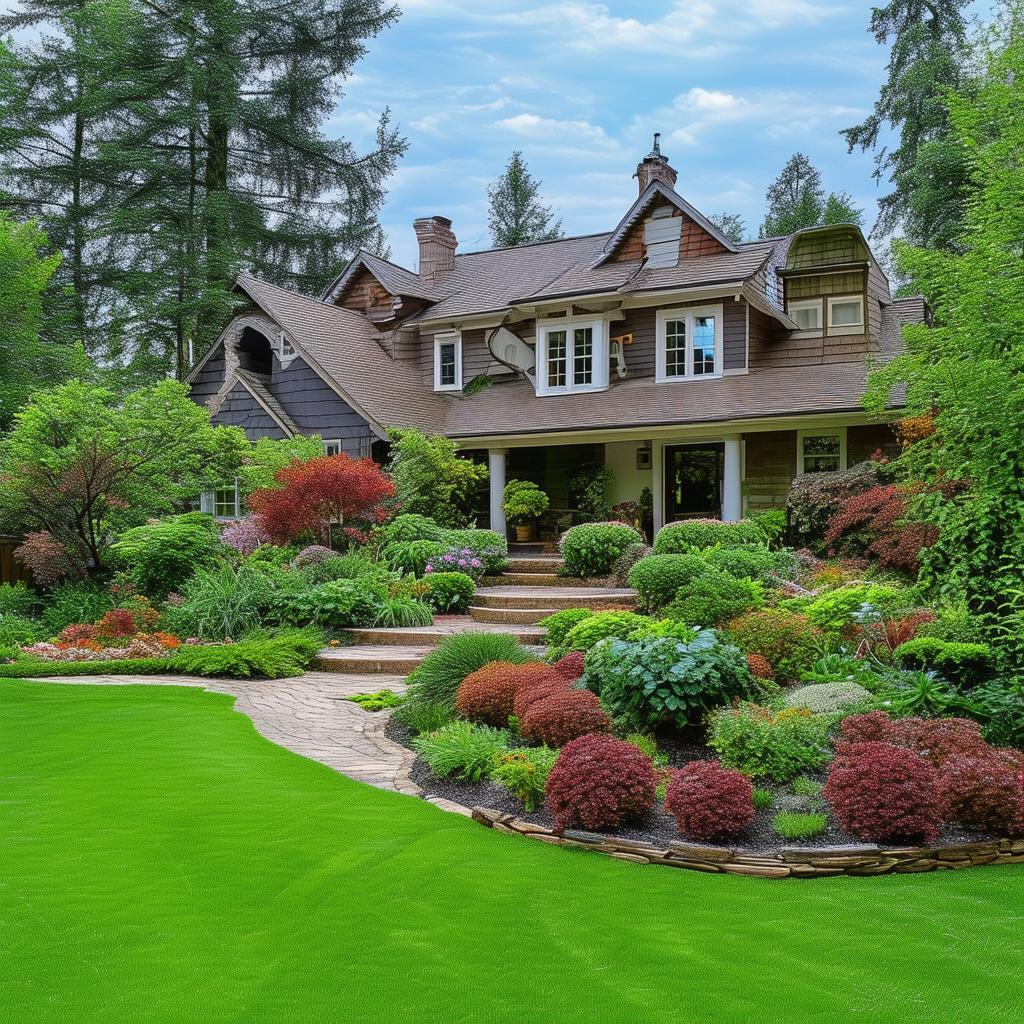
Q: Why is curb appeal important for a home?
A: Curb appeal serves as the first impression of your home, influencing everything from neighborhood acceptance to property value. Well-designed front yard landscaping creates a welcoming atmosphere and showcases your home’s style, inviting visitors and potential buyers alike.
Q: What are the essential elements of front yard landscaping?
A: Essential elements include a balanced mix of plants, pathways, lighting, and hardscaping features like patios or walls. Incorporating native plants, attractive walkways, and decorative elements can enhance aesthetics while providing a functional outdoor space.
Q: How can I choose the right plants for my front yard?
A: Start by analyzing your local climate and soil conditions. Opt for a blend of perennials and annuals for year-round color, and consider the mature size of plants to avoid overcrowding. Native plants often require less maintenance and support local wildlife, enhancing your garden’s ecosystem.
Q: Can you suggest some budget-friendly landscaping ideas?
A: Absolutely! Consider mulching existing planting beds, using stones or recycled materials for pathways, or starting a small vegetable garden. Grouping plants in clusters can create a fuller look without the cost of a wide variety, and DIY projects like painted planters can add personal flair.
Q: How can lighting impact my front yard?
A: Proper lighting transforms your front yard after dusk, highlighting architectural features and beautiful plants while improving safety. Consider solar lights along pathways, spotlights on trees, or subtle uplighting for a dramatic effect. The right ambiance can elevate your home’s evening appeal.
Q: What role does hardscaping play in landscaping?
A: Hardscaping encompasses non-plant elements like pathways, patios, and retaining walls, which provide structure and functionality to your landscape. It helps define spaces, improve drainage, and can break up large areas of grass, making your yard easier to maintain.
Q: How can I ensure my landscaping remains low maintenance?
A: Choose drought-resistant plants, establish a consistent mulching routine to suppress weeds, and incorporate irrigation systems such as drip lines. Designing with zones based on sunlight and water needs also ensures that your plants thrive with minimal effort.
Q: What tips do you have for integrating personal style into landscaping?
A: Incorporate unique features that reflect your personality—whether it’s a statement bench, colorful flower pots, or a themed garden like a butterfly garden or zen space. Use art, sculptures, or even wind chimes to make your front yard feel distinctly yours while complementing the natural beauty.
Q: How often should I update my front yard landscaping?
A: While it’s not necessary to completely overhaul your landscaping annually, minor updates each year—like rotating seasonal flowers or adding new features—can keep your curb appeal fresh. Every few years, reassess the overall design to ensure it still matches your tastes and lifestyle.
Q: Where can I find inspiration for my front yard landscaping project?
A: Sources of inspiration abound! Explore landscaping magazines, gardening websites, and social media platforms like Pinterest or Instagram. Visiting local botanical gardens or open house events can also spark ideas, giving you a sense of what works in your area.
Whether you’re preparing to sell your home or simply want to enhance its charm, front yard landscaping is a powerful investment. With thoughtful planning and a creative touch, you can transform your landscape into a reflection of your style while boosting your home’s allure.
Closing Remarks
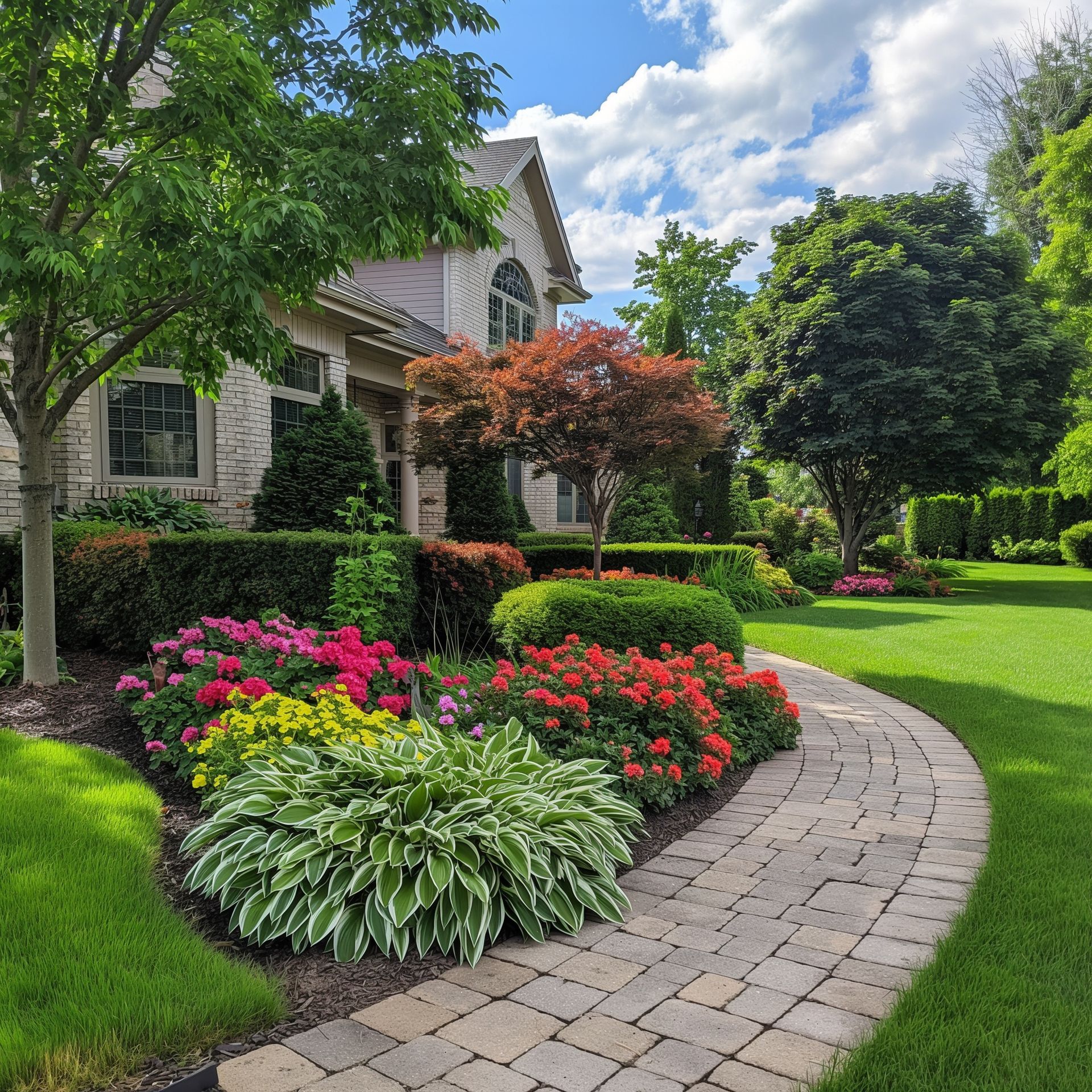
As we conclude our journey through the realm of front yard landscaping, remember that your outdoor space is more than just a patch of grass; it’s the welcoming embrace of your home. Each plant, rock, and pathway contributes to a narrative that captures your style and personality. By implementing the techniques and tips outlined in this guide, you not only enhance your home’s curb appeal but also cultivate a sense of pride and joy that radiates into your neighborhood.
So, whether you opt for a vibrant floral tapestry or a minimalist zen garden, let your creativity bloom. Embrace the process, involve your family, and take your time—great landscapes don’t happen overnight. With each thoughtful choice, you’ll transform your front yard into a beautiful reflection of who you are. Step outside, take a deep breath, and envision the possibilities. Your perfect curb appeal awaits!
 decorifusta Garden and patio decoration inspiration
decorifusta Garden and patio decoration inspiration
